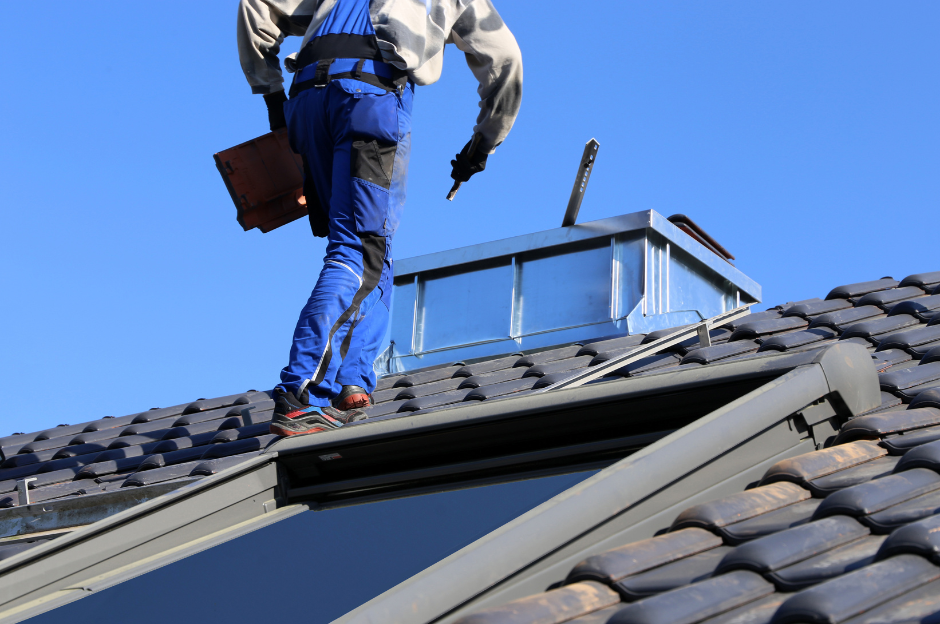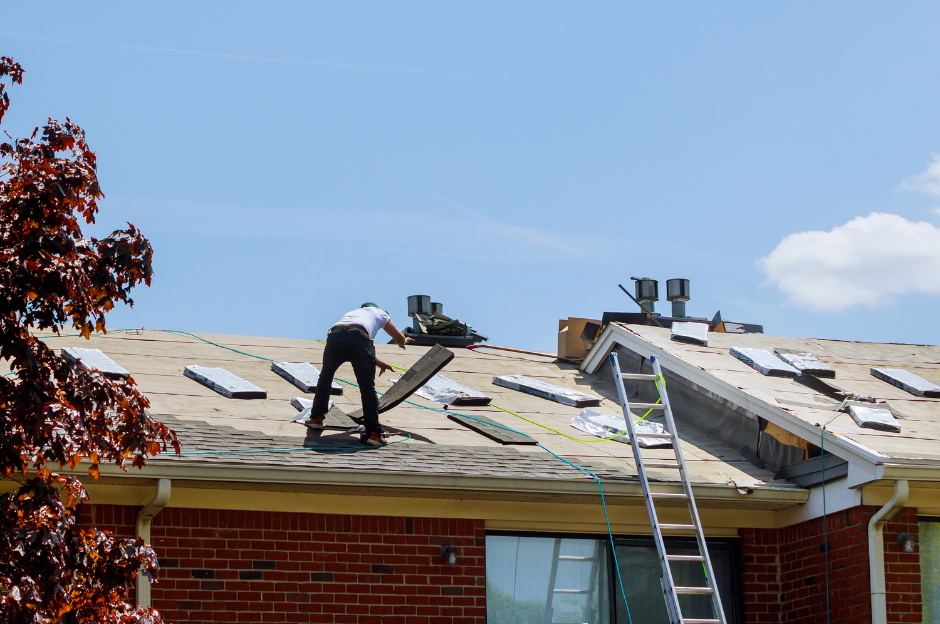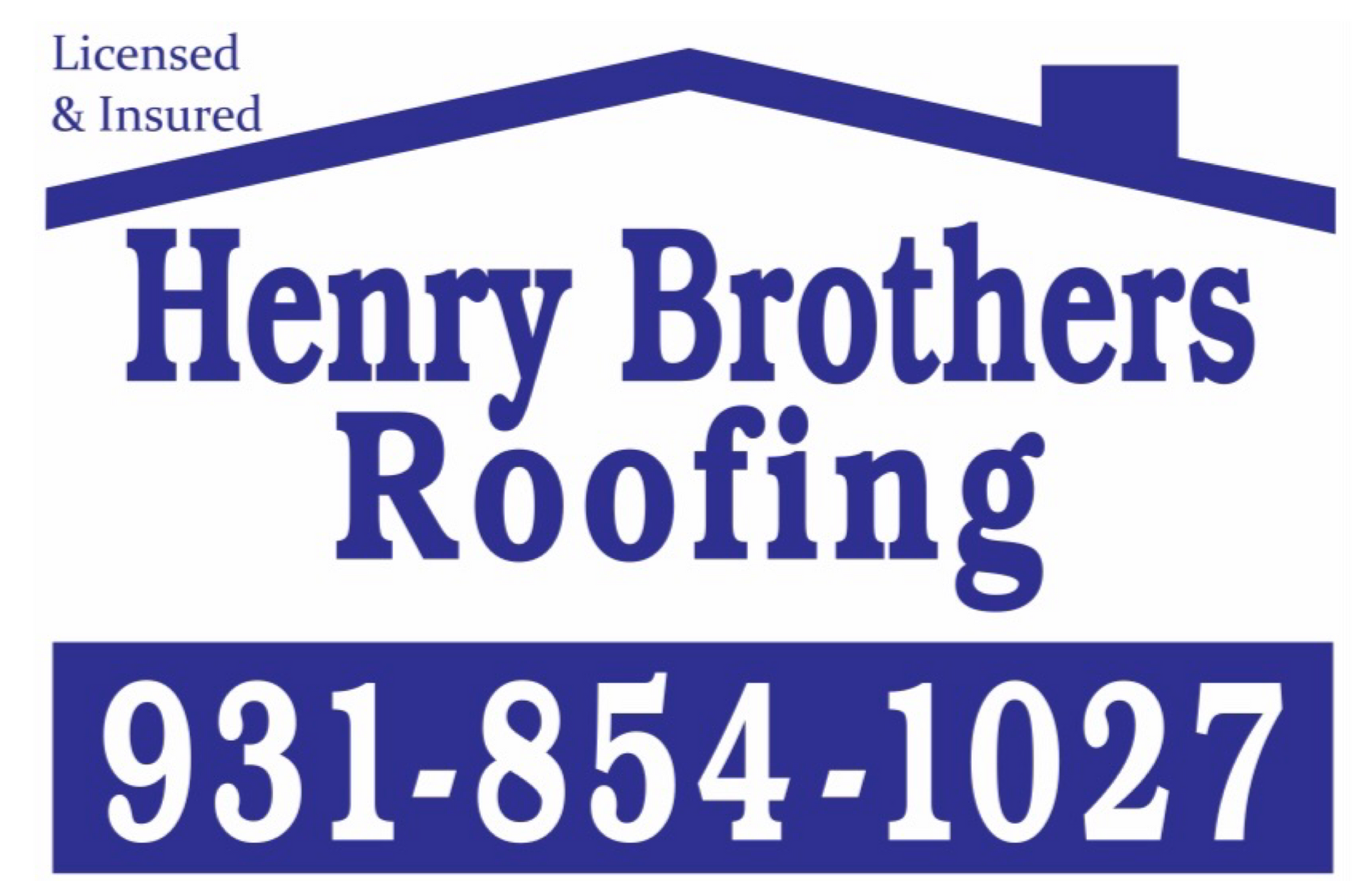Smart Roofing Solutions: Integrating Technology for Better Performance
September 12, 2024

The roofing industry is experiencing a technological revolution that is reshaping how we think about roofing solutions. As technology continues to advance, roofing systems are becoming smarter, more efficient, and more capable of addressing a range of performance challenges. This blog post will explore how integrating technology into roofing solutions can enhance performance, provide better protection, and offer innovative solutions for both residential and commercial buildings.
Understanding Smart Roofing Technology
Smart roofing technology refers to the integration of advanced materials, sensors, and systems that improve the functionality, durability, and efficiency of roofing systems. These technologies are designed to address various challenges, such as energy efficiency, weather resistance, and maintenance.
Key Components of Smart Roofing Technology:
Advanced Materials: Innovative materials with improved properties, such as enhanced insulation, durability, and weather resistance.
Sensors and Monitoring Systems: Devices that collect and analyze data related to the roof’s performance, including temperature, moisture levels, and structural integrity.
Smart Systems and Controls: Automated systems that adjust roofing functions based on real-time data, such as adaptive shading or ventilation.
Enhancing Energy Efficiency
Cool Roofing Technologies
Cool roofing technologies are designed to reflect more sunlight and absorb less heat than standard roofing materials. This can significantly reduce the heat island effect and lower cooling costs for buildings. Smart cool roofing systems integrate reflective coatings, high-performance materials, and advanced design features to maximize energy savings.
Reflective Coatings: Special coatings that reflect sunlight and reduce heat absorption, helping to keep buildings cooler.
Green Roofs: Vegetative roofs that provide natural insulation, reduce heat absorption, and improve energy efficiency.
Photovoltaic Roof Panels: Solar panels integrated into the roofing system to generate renewable energy and reduce reliance on external power sources.
Insulation and Thermal Performance
Advancements in insulation materials and technologies can enhance a roof’s thermal performance. Smart insulation systems use high-performance materials and innovative designs to improve energy efficiency and indoor comfort.
Insulated Roofing Panels: Panels that combine insulation with roofing materials to provide superior thermal performance.
Reflective Insulation: Materials that reflect radiant heat away from the building, reducing cooling costs and improving energy efficiency.
Dynamic Shading Systems
Dynamic shading systems adjust automatically based on sunlight and temperature conditions to optimize indoor comfort and energy use. These systems use sensors and smart controls to regulate shading and ventilation, reducing the need for artificial cooling and lighting.
Automated Blinds and Shades: Blinds and shades that adjust in response to real-time data on sunlight and temperature.
Smart Roof Vents: Vents that open or close based on weather conditions and indoor temperature to improve ventilation and reduce cooling costs.
Improving Durability and Weather Resistance
Advanced Roofing Materials
Innovative materials enhance the durability and weather resistance of roofing systems. These materials are designed to withstand extreme weather conditions, such as heavy rain, high winds, and intense UV radiation.
High-Performance Shingles: Shingles made from advanced polymers or composite materials that offer superior resistance to weathering and impact.
Modified Bitumen: Roofing membranes with enhanced durability and flexibility, designed to withstand harsh weather conditions and temperature fluctuations.
Self-Healing Roofs
Self-healing roofing systems use advanced materials that can repair minor damage autonomously. These systems incorporate materials with self-repairing properties that seal small cracks and prevent leaks.
Self-Healing Membranes: Membranes embedded with microcapsules containing repair agents that activate when the roof is damaged.
Self-Healing Coatings: Coatings that react to damage by forming a protective layer over the affected area.
Weather Monitoring and Alerts
Smart roofing systems incorporate weather sensors that monitor environmental conditions and provide real-time alerts for extreme weather events. This allows property owners to take proactive measures to protect their roofs and prevent damage.
Weather Stations: Devices that measure temperature, humidity, wind speed, and precipitation to provide accurate weather data.
Automated Alerts: Notifications sent to property owners or building managers in response to severe weather conditions, such as storms or high winds.
Streamlining Maintenance and Repairs
Predictive Maintenance
Predictive maintenance uses data from sensors and monitoring systems to anticipate and address potential issues before they become major problems. This approach helps extend the lifespan of roofing systems and reduce maintenance costs.
Condition Monitoring: Sensors that track the condition of roofing materials and alert property owners to potential issues, such as leaks or wear.
Data Analysis: Tools that analyze data from sensors to predict when maintenance or repairs are needed.
Remote Monitoring and Control
Remote monitoring and control systems allow property owners and building managers to monitor the condition of their roofs and make adjustments from anywhere. These systems provide real-time data and control over various roofing functions.
Remote Sensors: Devices that transmit data on roof conditions to a central monitoring system.
Mobile Apps: Applications that allow users to access real-time data, receive alerts, and control roofing functions from their smartphones.
Smart Repair Solutions
Smart repair solutions use advanced technologies to streamline the repair process and improve efficiency. These solutions often involve automated systems and tools that enhance the accuracy and effectiveness of repairs.
Drones for Inspections: Unmanned aerial vehicles (drones) equipped with cameras and sensors for conducting roof inspections and identifying damage.
Robotic Repair Systems: Robots designed to perform repairs on roofs, such as patching leaks or replacing damaged tiles.
Enhancing Safety and Security
Integrated Security Systems
Smart roofing systems can integrate with security systems to enhance the safety of a building. These systems provide monitoring and control capabilities to protect against unauthorized access and potential threats.
CCTV Cameras: Cameras installed on or around the roof to monitor for security breaches and provide surveillance footage.
Motion Sensors: Sensors that detect movement on the roof and trigger alerts in case of unauthorized access.
Emergency Response Systems
Emergency response systems are designed to provide immediate assistance in the event of a roofing emergency. These systems use technology to ensure a prompt and effective response to issues such as leaks or structural damage.
Emergency Notifications: Alerts sent to property owners, building managers, or emergency responders in case of a roofing emergency.
Automated Response Systems: Systems that activate automatically in response to certain conditions, such as closing roof vents during heavy rain to prevent leaks.
Case Studies and Examples
Commercial Building with Integrated Smart Roofing
A commercial building in a metropolitan area integrated smart roofing technology to improve energy efficiency and weather resistance. The building’s roof featured cool roofing materials, dynamic shading systems, and weather monitoring sensors. The result was a significant reduction in cooling costs, improved indoor comfort, and enhanced durability.
Residential Home with Self-Healing Roof
A residential homeowner adopted a self-healing roofing system to address concerns about maintenance and durability. The roof featured self-healing membranes and coatings that repaired minor damage autonomously. The homeowner reported fewer maintenance issues and extended the lifespan of the roof.
High-Rise Building with Remote Monitoring
A high-rise building implemented a remote monitoring system to manage its roofing infrastructure. The system provided real-time data on roof conditions, allowed for remote control of ventilation systems, and enabled predictive maintenance. This approach helped prevent costly repairs and ensured the roof remained in optimal condition.
Future Trends and Innovations
Smart Roofs with IoT Integration
The Internet of Things (IoT) is set to revolutionize smart roofing technology by connecting roofing systems with other smart devices and systems. IoT-enabled roofs will provide more comprehensive data, enhance automation, and improve overall performance.
Sustainable Roofing Solutions
Sustainability will continue to drive innovation in roofing technology. Future developments may include eco-friendly materials, green roofing systems, and technologies that reduce environmental impact and promote energy efficiency.
Advanced Data Analytics
Advanced data analytics will play a crucial role in optimizing smart roofing systems. By analyzing data from various sources, including sensors and weather monitoring systems, roofing technologies will become more adaptive and responsive to changing conditions.
Henry Brothers Blog

Multi-family buildings pose unique challenges for roofing—requiring durable, efficient, and cost-effective solutions that serve multiple households simultaneously. Selecting the right system and partner can significantly impact long-term maintenance and energy bills. Common Roofing Challenges in Multi-Family Properties Large surface areas Multiple penetrations (vents, HVAC units) Noise and disruption during installation High foot traffic for maintenance Energy efficiency Efficient Roofing Materials TPO (Thermoplastic Polyolefin): Lightweight, reflective, and energy-efficient. Ideal for flat or low-slope roofs. Modified Bitumen: Offers durability and weather resistance. Works well for larger structures. Metal Roofing: Long-lasting and low-maintenance. Higher upfront costs but excellent ROI. Asphalt Shingles: Budget-friendly and easy to repair. Better for pitched multi-family homes. Affordability Strategies Bulk Purchasing Discounts: Roofers often offer lower rates for large-scale projects. Energy Rebates and Tax Credits: Cool roofing materials may qualify for incentives. Roof Coatings: Extend lifespan and defer full replacements. Preventive Maintenance Plans: Regular inspections reduce major repair costs. Partnering with the Right Contractor Choose a roofing contractor experienced in multi-family dwellings. Look for: References from similar projects Warranty offerings Insurance and licensing Clear timelines and communication protocols

Your roof is one of the most defining features of your home’s architecture. A well-designed roof complements the style, era, and character of your house, enhancing both curb appeal and value. Whether you own a modern home, a Victorian masterpiece, or a Mediterranean villa, choosing the right roofing materials and design is essential. This article explores custom roofing solutions for different architectural styles, ensuring your roof is both aesthetic and functional. 1. Why Custom Roofing Matters A one-size-fits-all approach doesn’t work for roofing. Here's why customization is key: 🏡 Preserves Architectural Integrity The roof should match the home's era and design. A poorly chosen roof can clash with the architecture and reduce property value. 💰 Boosts Home Value & Curb Appeal A well-matched roof enhances visual appeal, making your home stand out. Homebuyers prefer houses with roofs that fit the overall design. 🌦 Enhances Durability & Efficiency Custom roofing accounts for climate, slope, and insulation. Choosing the right materials ensures longer roof life and energy efficiency. 2. Best Roofing Materials for Different Architectural Styles 🏗 Modern & Contemporary Homes Modern architecture focuses on clean lines, minimalism, and energy efficiency. Best Roofing Options: ✅ Flat Roofs – Achieve a sleek, contemporary look. ✅ Metal Roofing – Durable and complements modern aesthetics. ✅ Green Roofs – Eco-friendly and visually striking. ✅ Solar Panels – Integrate renewable energy solutions. 🏰 Victorian & Gothic Revival Homes These homes have steep-pitched roofs, turrets, and elaborate detailing. Best Roofing Options: ✅ Slate Tiles – Classic, long-lasting, and historically accurate. ✅ Wood Shingles – Adds charm and natural beauty. ✅ Decorative Metal Accents – Enhances ornate Victorian designs. 🏝 Mediterranean & Spanish-Style Homes Inspired by European coastal homes, these feature stucco walls and curved archways. Best Roofing Options: ✅ Clay or Terracotta Tiles – Traditional, weather-resistant, and elegant. ✅ Concrete Tiles – Durable and available in various textures and colors. ✅ Synthetic Spanish Tiles – Modern, lightweight alternatives with classic appeal. 🌲 Rustic & Cabin-Style Homes These homes emphasize natural materials and a cozy aesthetic. Best Roofing Options: ✅ Wood Shakes – Blends seamlessly with wooded surroundings. ✅ Metal Roofing (Rustic Finish) – Durable with a weathered, natural look. ✅ Green Roofs – Enhances sustainability and insulation. 🏡 Colonial & Traditional Homes These timeless homes focus on symmetry and classic proportions. Best Roofing Options: ✅ Asphalt Shingles – Affordable and available in classic shades. ✅ Slate Roofing – Elegant and historically accurate. ✅ Copper or Metal Accents – Enhances historic charm. 🏛 Mid-Century Modern Homes This style features low-sloped roofs, large windows, and open spaces. Best Roofing Options: ✅ Flat or Low-Slope Roofs – Clean, minimalistic aesthetic. ✅ Rubber or Membrane Roofing – Ideal for low-pitch roofs. ✅ Green or Living Roofs – Complements eco-conscious designs. 🏰 Tudor-Style Homes Tudor homes have steeply pitched gables and decorative half-timbering. Best Roofing Options: ✅ Wood or Synthetic Shake Shingles – Traditional and authentic. ✅ Slate Roofing – Enhances historic charm and durability. ✅ Architectural Asphalt Shingles – Mimics wood or slate at a lower cost. 3. Custom Roofing Features to Consider Beyond materials, adding customized elements can elevate your roof’s design. 🔹 Roof Color & Texture Dark roofs enhance historic and formal homes. Light-colored roofs reflect heat, ideal for warm climates. Textured materials (slate, shakes) add visual depth. 🏠 Roof Shape & Pitch Steep roofs fit Gothic and Victorian styles. Flat or low-sloped roofs match modern homes. Custom pitches enhance energy efficiency and durability. 🔆 Skylights & Roof Windows Adds natural light and enhances ventilation. Works well in modern, contemporary, and rustic homes. 🌞 Solar Roofing & Smart Technology Solar shingles blend seamlessly into modern & eco-friendly homes. Smart roofing systems adjust ventilation & insulation automatically. 4. Custom Roofing: How to Get Started 1️⃣ Consult a Roofing Expert Work with an architect or contractor specializing in custom roofs. Ensure they understand historical accuracy and climate considerations. 2️⃣ Choose High-Quality Materials Invest in durability, energy efficiency, and aesthetics. Select roofing that aligns with your home’s style and longevity needs. 3️⃣ Consider Long-Term Costs & ROI Some materials have higher upfront costs but last longer and increase home value. Energy-efficient options can reduce heating and cooling expenses. 4️⃣ Verify Local Building Codes Some roofing styles require special permits. Ensure compliance with HOA guidelines and historical district regulations.


